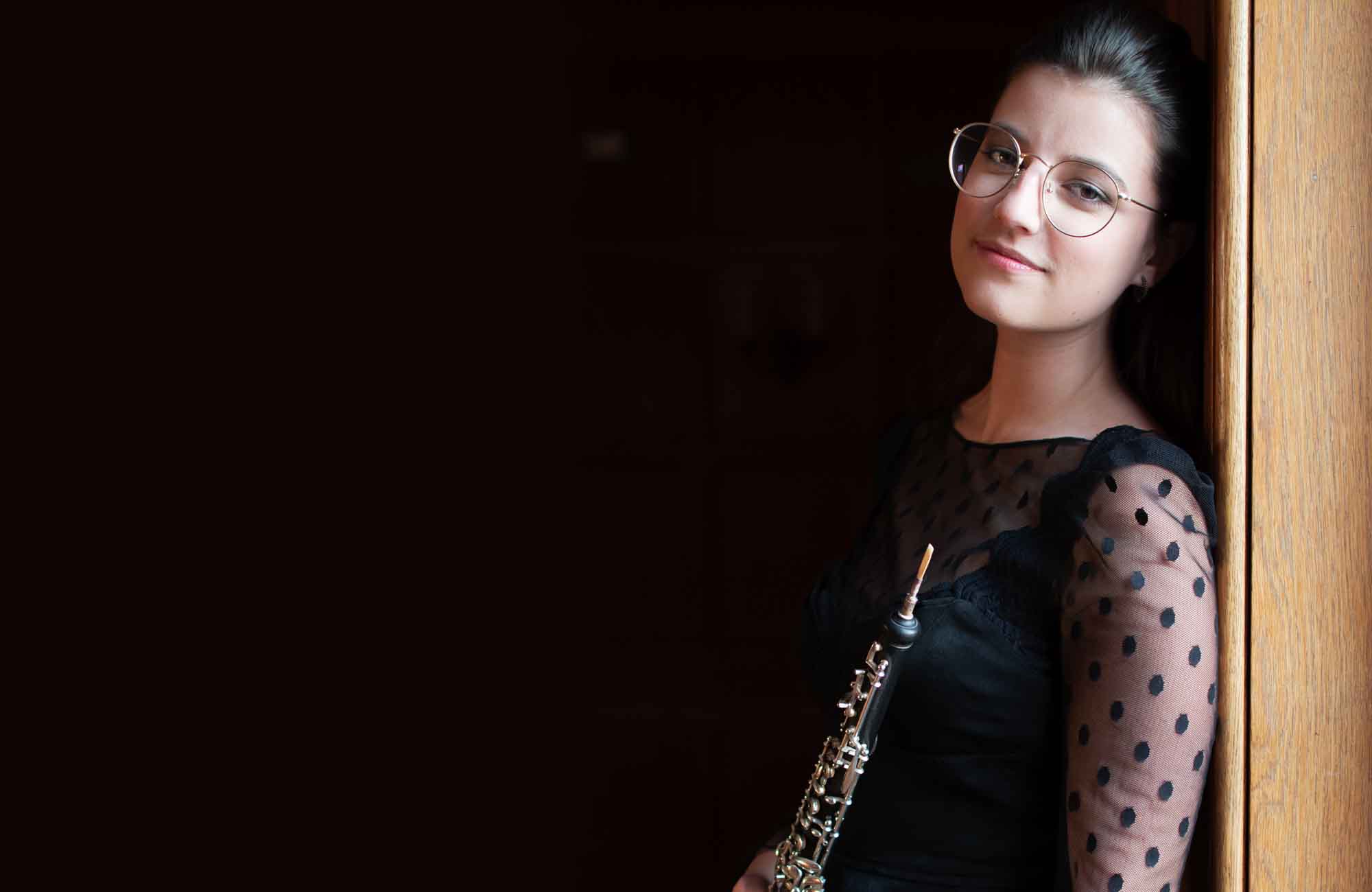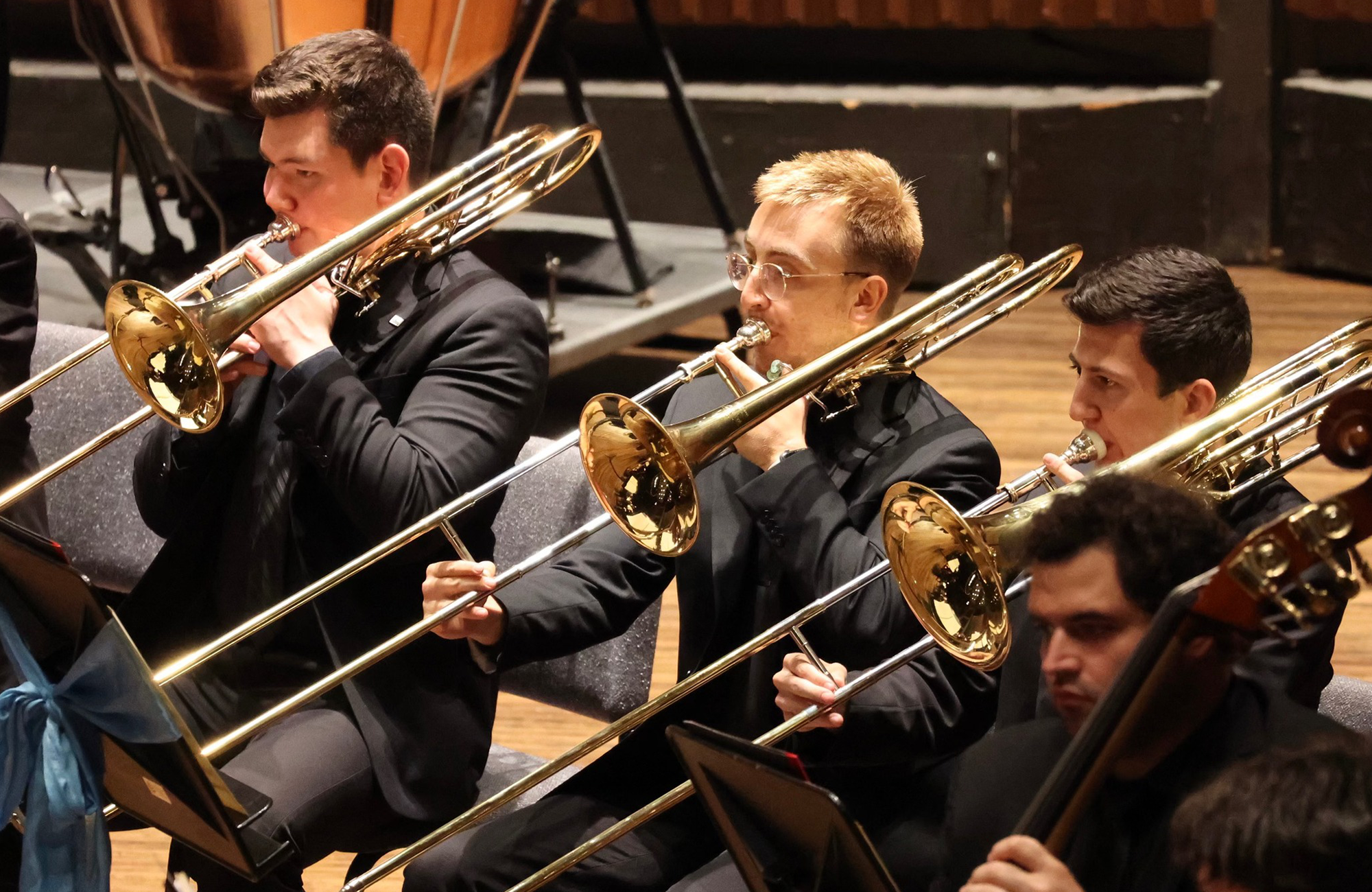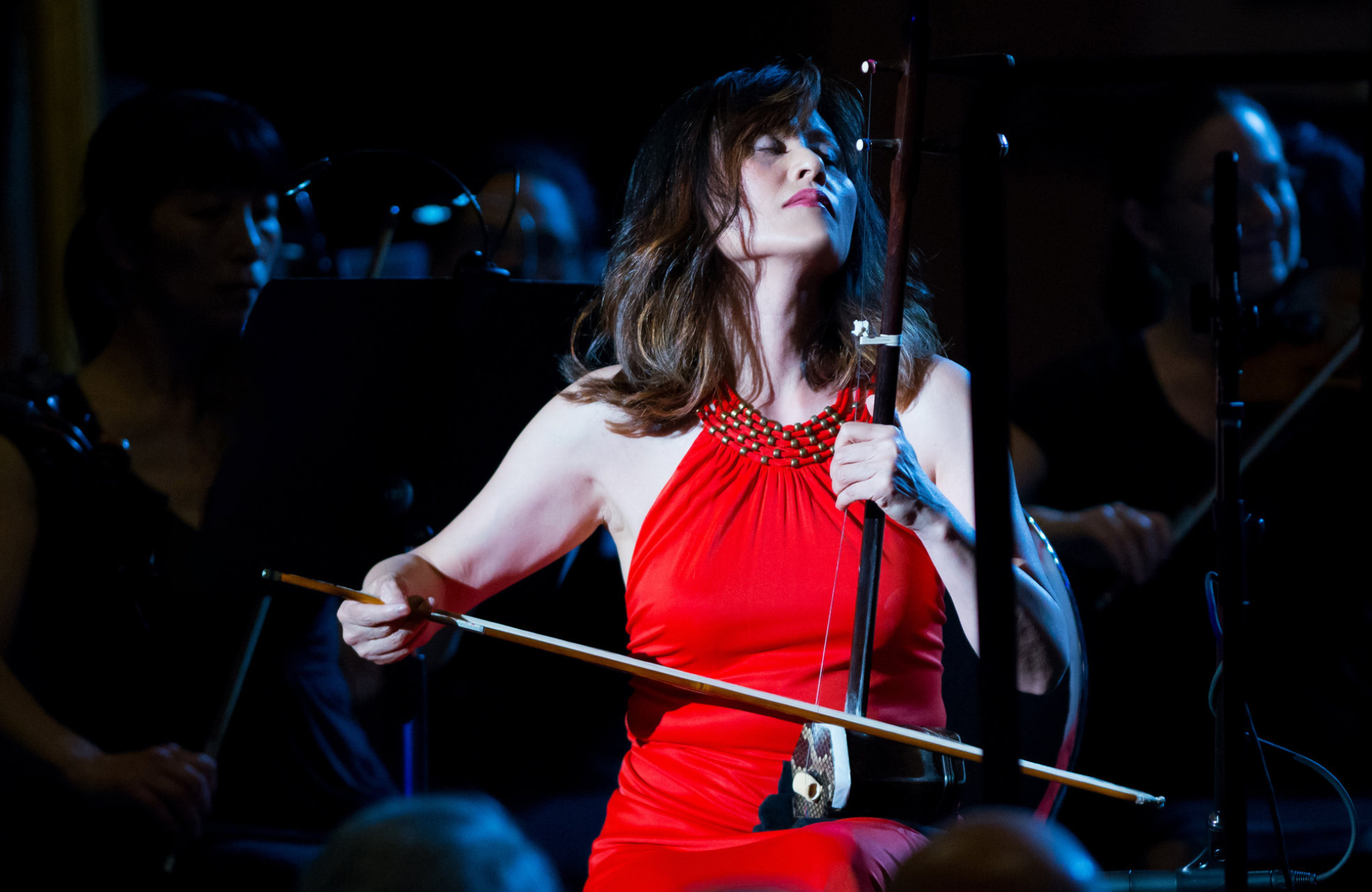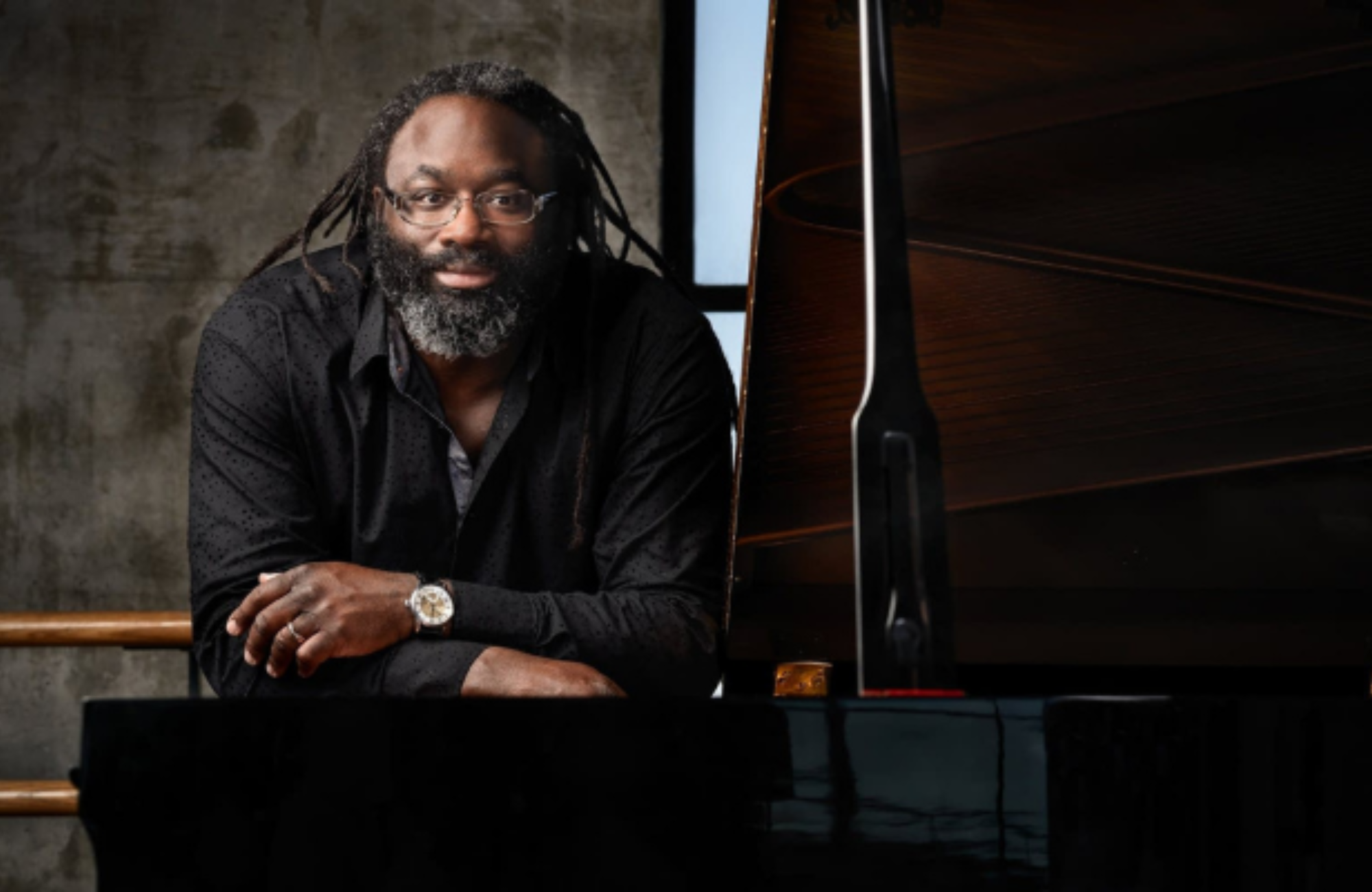PROGRAM
BEETHOVEN: Grosse Fuge, op.133 ![]()
HIGDON: Oboe Concerto ![]()
DELIUS: Irmelin: Prelude ![]()
MOZART: Symphony No.41, K.551, C major (Jupiter) ![]()
This concert is made possible with generous support from our sponsor
PROGRAM NOTES
Music has both intellectual and emotional dimensions, balanced in different ways in different pieces. And if you ask classical-music lovers to name the musical form in which the intellectual predominates, chances are they’ll point to the fugue. What exactly is a fugue? A fugue is a work with multiple independent voices—musical lines—that are equally important (unlike, say, a hymn tune where the main melody predominates). More specifically, it features a musical motive (a melodic figure) known as the “subject.” The subject is usually first heard by itself, then other voices enter with the same motive one-by-one ...
Music has both intellectual and emotional dimensions, balanced in different ways in different pieces. And if you ask classical-music lovers to name the musical form in which the intellectual predominates, chances are they’ll point to the fugue. What exactly is a fugue? A fugue is a work with multiple independent voices—musical lines—that are equally important (unlike, say, a hymn tune where the main melody predominates). More specifically, it features a musical motive (a melodic figure) known as the “subject.” The subject is usually first heard by itself, then other voices enter with the same motive one-by-one in imitation, after which it is varied and interspersed with other material, producing a complex musical web that demands tremendous intellectual energy. Yet while fugues are inherently intellectual, they can have tremendous emotional impact, too—as the opening and closing works on this concert make clear.
The concert begins with the Grosse Fuge (Great Fugue) by Ludwig van Beethoven (1770–1827). It’s a double fugue (one made more complex by having two subjects, at times heard together) that was originally composed in 1826 to serve as the final movement of Beethoven’s String Quartet op. 130. But the composer was eventually persuaded that it was too long and complicated for the already-lengthy quartet, so he substituted a simpler finale and published the fugue separately as op. 133. If any work fulfills the fugue’s double potential as a form—intellectual rigor (Beethoven himself used the word “recherchée”) fused with visceral power—it’s this one.
Technically, the Grosse Fuge represents Beethoven at his most radical: not only did it puzzle his contemporaries, but even today it sounds knotty. The voices seem to be disputing one another in a complex way that, as conductor Larry Loh puts it, “pushes the harmonic language to the limit.” The rhythmic interplay is similarly intricate and forward-looking. In fact, Stravinsky, in the 1960s, claimed that the work was “the most absolutely contemporary of music I know, and contemporary forever,” in part because of its rhythm, “more subtle than any music of my own century”—including, presumably, his own revolutionary Rite of Spring. For Larry, “Diving into it and making sense of this language is one of the most gratifying things to do.”
But for all its erudition, the Grosse Fuge doesn’t seem abstract: if you want a potent exemplar of Beethoven’s titanic struggles to liberate music from classical conventions, it’s this work—even more than the “Eroica” or the Ninth Symphony—you should turn to. Almost since it was composed, many felt it was simply too big for a mere four players, and it was taken over by larger string ensembles. It’s heard tonight in an adaptation by conductor Felix Weingartner. This performance is part of a two-season celebration of the 250th anniversary of Beethoven’s birth.
After the rigors, intellectual and emotional, of the Grosse Fuge, we need to catch our breath—and we do so with the Oboe Concerto composed in 2005 by Jennifer Higdon (b. 1962), a work that steers clear of Beethoven’s thorniness and his contested inner lines. Higdon was taken with the oboe’s abilities to converse with the other soloists in the orchestra, as well as with the instrument’s lyricism. (Indeed, from the very beginning, the concerto has a quintessentially American melodiousness that may make you think of Copland or Barber.) For soloist Jillian Honn, the concerto is music you can play with, “a good time, a chance to have fun and show what we can do without being too serious.” In alternating slow and fast sections, it gives her a chance to exhibit two personalities. In the slower sections, “the oboist gets to show our facility in changing colors, which is maybe not something that people immediately associate with the oboe.” In the faster sections, she can be “cheeky” and “flirty,” especially as she enters into dialogue with the winds and even the percussion (her favorite part). “At times, it’s almost like I’m a soloist in a jazz band. I’m riffing on something, then I throw it at them and they say it back at me, back and forth with a little bit of variation.”
The concert ends with a work that, in its final movement, miraculously combines the fugal rigor of the Beethoven with the lightness of spirit represented by the Higdon—the Symphony No. 41, the so-called “Jupiter” Symphony, by Wolfgang Amadeus Mozart (1756–1791). It was composed—one might even say knocked off—in just a few weeks in 1788, while Mozart was composing several other works, dealing with a variety of family crises, and leading his usual active social life. The fugue is preceded by three movements, any of which, by itself, would be enough to make this one of the great symphonic works in the Western canon: a festive trumpet-and-drum tinted opening in sonata form; a sweetly sung, half-lit slow movement featuring muted strings; and an infectiously swinging minuet and trio. But it is the finale that lifts this piece from the merely exceptional to the sublime: a dazzling quintuple fugue that ends up juggling all five subjects at once.
Every conductor has his or her trademark. For Georg Solti it was weight, for Bernstein in his prime it was electricity. Larry tends to stress what he calls “transparency requirements,” something that makes his performances especially vivid. He explains: “I don’t usually focus on the melody. I want to make sure that all of it is heard, which involves resisting the very heavy and sustained modern approach to playing, and paying close attention, from the first rehearsal, to sound quality, phrasing, lightness, taper, and balance.” In other words, the finale of the Mozart is a movement made for Larry—and a superlative way to show off the orchestra’s virtuosity.
There’s one more piece on the program. Coming from intermission to a work of this magnitude seemed too much, so before the Mozart we offer a brief palate cleanser, the Irmelin Prelude by Frederick Delius (1862–1934). It’s a mellifluous, impressionistic late work, from 1931, that’s based on themes from an early opera—and would seem to have nothing in common with the “Jupiter” Symphony. And yet…If, as Larry puts it, the Mozart is “uplifting and inspiring,” so in a very different way is the Delius. By the time Delius got around to writing this piece, he was both blind and paralyzed, and had to dictate his music, note-by-note, to his amanuensis Eric Fenby. How could you not be uplifted and inspired by the inner strength of a man who, through such a laborious process, could produce such effortless-sounding music?
Peter J. Rabinowitz
Have any comments or questions? Please write to me at prabinowitz@ExperienceSymphoria.org
FEATURED ARTISTS
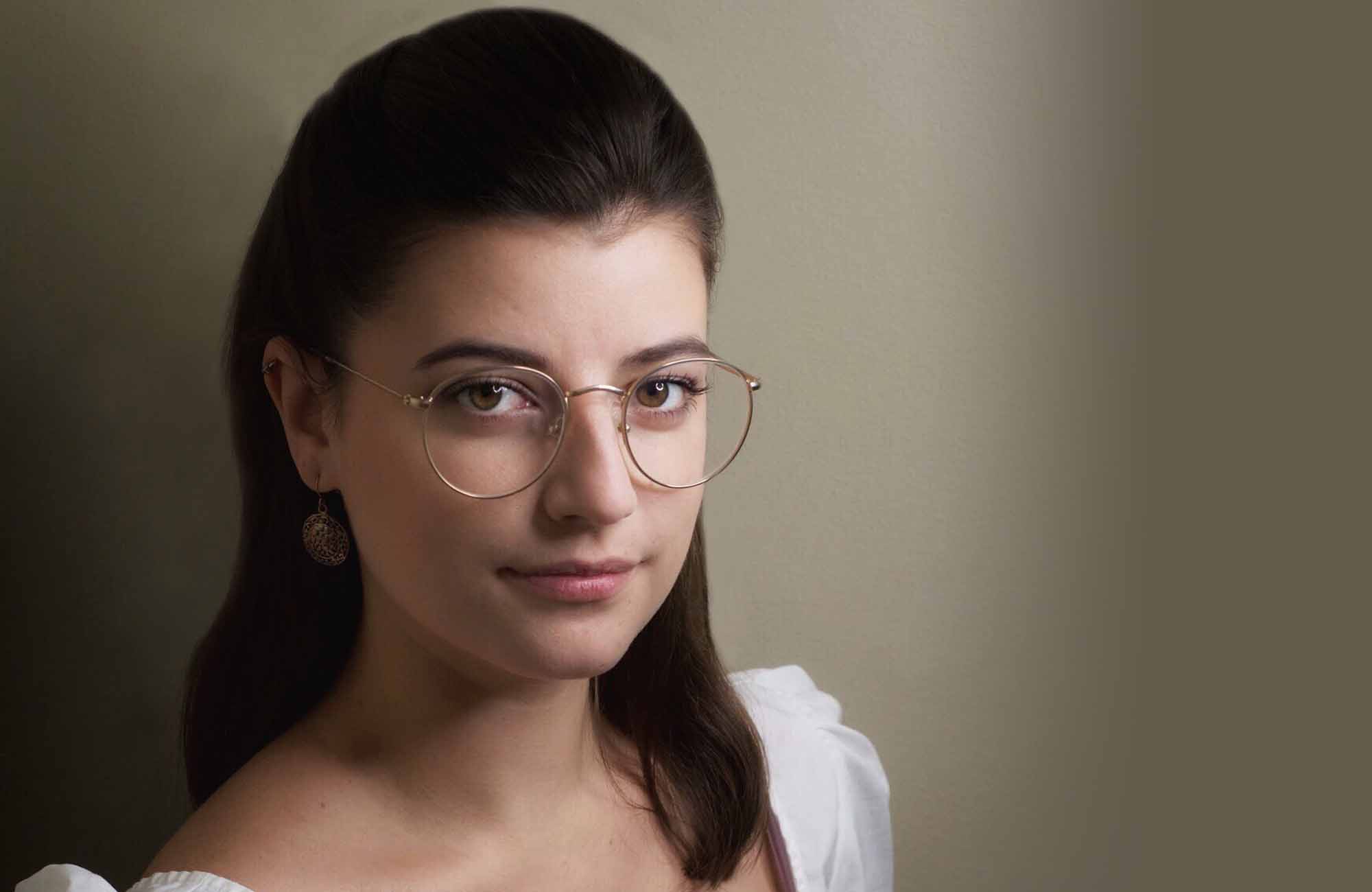
Jillian Honn is the former principal oboist of Syracuse’s Symphoria. During her five seasons with Symphoria, Honn was a featured soloist on both Mozart’s Sinfonia Concertante and his Oboe Concerto in C major, and is honored to return to perform Jennifer Higdon’s Oboe Concerto as a ...
Jillian Honn is the former principal oboist of Syracuse’s Symphoria. During her five seasons with Symphoria, Honn was a featured soloist on both Mozart’s Sinfonia Concertante and his Oboe Concerto in C major, and is honored to return to perform Jennifer Higdon’s Oboe Concerto as a guest artist. Outside of the orchestra, she has been an avid chamber musician in New York performing as a part of the LaVeck Concert Series, Syracuse Friends of Chamber Music, and Little Summer Music in Vienna. Additionally, her wind quintet, The Eclectet, has been awarded several grants and residencies in public schools and spaces within Upstate New York. Formed in 2012, The Eclectet represents the next generation of chamber music performers, offering concert experiences that are interactive and meaningful for all audiences, while also focusing on more contemporary compositions.
Jillian was the recipient of Civic Morning Musicals’ award for Excellence in Music Performance in Central New York in 2018, and has had the continued honor of being an oboist for the Skaneateles Festival. In addition to Symphoria, Jillian has performed with the Cayuga Chamber Orchestra, Rochester Philharmonic and Chamber Orchestra, the New World Symphony, Finger Lakes Opera, and the Buffalo Philharmonic, among others. In addition to maintaining a private oboe studio, she has been a Visiting Lecturer in Music at Ithaca College and was formerly on faculty at LeMoyne and Hamilton Colleges. A graduate of the Eastman School of Music (BM, PC, ALP) where she studied with Richard Killmer, Jillian is currently pursuing her Master of Music degree at Yale University under the tutelage of Stephen Taylor.

Described as bringing an “artisan storyteller’s sensitivity… shaping passages with clarity and power via beautifully sculpted dynamics… revealing orchestral character not seen or heard before” (Arts Knoxville) Lawrence Loh enjoys a dynamic career as a conductor of orchestras all over the world.
After an extensive two ...
Described as bringing an “artisan storyteller’s sensitivity… shaping passages with clarity and power via beautifully sculpted dynamics… revealing orchestral character not seen or heard before” (Arts Knoxville) Lawrence Loh enjoys a dynamic career as a conductor of orchestras all over the world.
After an extensive two year search, Lawrence Loh was recently named Music Director of the Waco Symphony Orchestra beginning in the Spring of 2024. Since 2015, he has served as Music Director of The Syracuse Orchestra (formerly called Symphoria), the successor to the Syracuse Symphony Orchestra. “The connection between the organization and its audience is one of the qualities that’s come to define Syracuse’s symphony as it wraps up its 10th season, a milestone that might have seemed impossible at the beginning,” (Syracuse.com) The Syracuse Orchestra and Lawrence Loh show that it is possible to create a “new, more sustainable artistic institution from the ground up.”
Appointed Assistant Conductor of the Pittsburgh Symphony in 2005, Mr Loh was quickly promoted to Associate and Resident Conductor within the first three years of working with the PSO. Always a favorite among Pittsburgh audiences, Loh returns frequently to his adopted city to conduct the PSO in a variety of concerts. Mr. Loh previously served as Music Director of the West Virginia Symphony Orchestra, Music Director of the Northeastern Pennsylvania Philharmonic, Artistic Director and Principal Conductor of the Syracuse Opera, Music Director of the Pittsburgh Youth Symphony Orchestra, Associate Conductor of the Dallas Symphony Orchestra, Associate Conductor of the Colorado Symphony Orchestra and Music Director of the Denver Young Artists Orchestra.
Mr. Loh’s recent guest conducting engagements include the San Francisco Symphony, Dallas Symphony, North Carolina Symphony, Baltimore Symphony, Sarasota Orchestra, Florida Orchestra, Pensacola Symphony, Atlanta Symphony, National Symphony, Detroit Symphony, San Diego Symphony, Seattle Symphony, National Symphony (D.C.), Utah Symphony, Rochester Philharmonic, Indianapolis Symphony, Calgary Philharmonic, Buffalo Philharmonic, Albany Symphony and the Cathedral Choral Society at the Washington National Cathedral. His summer appearances include the festivals of Grant Park, Boston University Tanglewood Institute, Tanglewood with the Boston Pops, Chautauqua, Sun Valley, Shippensburg, Bravo Vail Valley, the Kinhaven Music School and the Performing Arts Institute (PA).
As a self-described “Star Wars geek” and film music enthusiast, Loh has conducted numerous sold-out John Williams and film music tribute concerts. Part of his appeal is his ability to serve as both host and conductor. “It is his enthusiasm for Williams’ music and the films for which it was written that is Loh’s great strength in this program. A fan’s enthusiasm drives his performances in broad strokes and details and fills his speaking to the audience with irresistible appeal. He used no cue cards. One felt he could speak at filibuster length on Williams’ music.” (Pittsburgh Tribune)
Mr Loh has assisted John Williams on multiple occasions and has worked with a wide range of pops artists from Chris Botti and Ann Hampton Callaway to Jason Alexander and Idina Menzel. As one of the most requested conductors for conducting Films in Concert, Loh has led Black Panther, Star Wars (Episodes 4-6), Jaws, Nightmare Before Christmas, Jurassic Park, Casablanca, The Wizard of Oz and Singin’ in the Rain, among other film productions.
Lawrence Loh received his Artist Diploma in Orchestral Conducting from Yale, his Masters in Choral Conducting from Indiana University and his Bachelor of Arts from the University of Rochester. Lawrence Loh was born in southern California of Korean parentage and raised in Carlisle, Pennsylvania. He and his wife Jennifer have a son, Charlie, and a daughter, Hilary. Follow him on instagram @conductorlarryloh or Facebook at @lawrencelohconductor or visit his website, www.lawrenceloh.com


